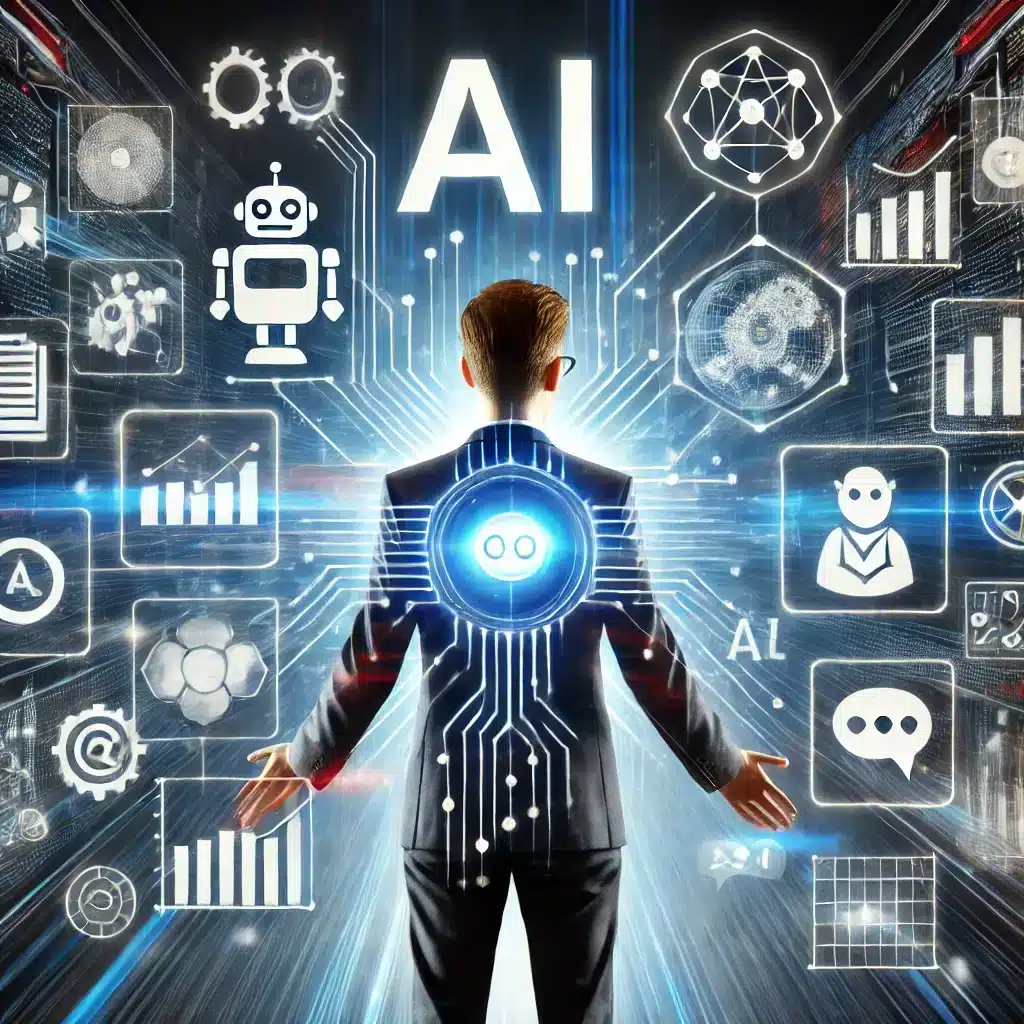Alright folks, we’re diving headfirst into the fascinating world of machine learning! If you’ve ever wondered how Netflix seems to know exactly what kind of movie you’d like to watch next or how Siri understands you even when you’re mumbling half-asleep, you’re in the right place. Machine learning is the magic behind these everyday miracles. Let’s break it down and understand this blockbuster technology from definition to applications.
What is Machine Learning?
Let’s start with the basics—what exactly is machine learning? Imagine having the power to teach a computer to learn from data, improve from experience, and make decisions similarly to humans. That, my friend, is the essence of machine learning.
Definition of Machine Learning
Machine learning is a subfield of artificial intelligence (AI) that focuses on the development of algorithms and statistical models that enable computers to perform tasks without explicit instructions. Essentially, the machine learning system learns and establishes patterns from data, making it capable of predictions and decisions by itself. Pretty cool, right?
How Does Machine Learning Work?
Alright, so how does this learning magic actually work? The core of machine learning lies in algorithms. These algorithms feed on huge datasets, learning and recognizing patterns within that data. For instance, a machine learning model can be trained on thousands of labeled images of cats and dogs, enabling it to categorize new images accurately most of the time. But it’s not just limited to pet photos; the learning system can process text, speech, and even complex numerical data.
History and Evolution of Machine Learning
The journey of machine learning is nothing short of an epic saga. It all began in the mid-20th century with the concept of artificial intelligence. Pioneers like Alan Turing laid the groundwork with critical thinking around machine learning. Fast forward to the 1980s, when machine learning started to evolve from basic pattern recognition into more sophisticated techniques. Then, in the 21st century, we saw the rise of deep learning algorithms and automated machine learning that pushed boundaries even further. Today, machine learning is ubiquitous, powering everything from self-driving cars to social media algorithms.
What Are the Different Types of Machine Learning?
The world of machine learning is diverse, comprising several types that serve different purposes. Let’s explore the main types of machine learning techniques you’ll come across.
Supervised Learning
Supervised learning algorithms are like students with a tutor. They learn from a labeled dataset that acts as a guide. For example, if you wanted a machine learning model to identify spam emails, you’d train it on a dataset that includes examples of spam and non-spam emails. Through this supervised learning, the system learns to make predictions on new, unseen data based on the labeled data it was trained on.
Unsupervised Learning
In contrast, unsupervised learning is like a student without a tutor, exploring data to uncover hidden patterns or groupings. This type of machine learning doesn’t provide the model with labeled data upfront. Instead, it finds relationships in the data on its own. A common example of unsupervised learning is clustering algorithms that segment customers into distinct groups based on purchasing behavior.
Reinforcement Learning
Reinforcement learning is all about learning through trial and error. Think of it as training a dog—you give positive feedback (rewards) for good behavior and negative feedback (penalties) for bad behavior. Over time, the learning system learns what actions lead to positive outcomes. This type of learning is often used in gaming, robotics, and navigation systems.
How Do Machine Learning Algorithms Work?
Machine learning algorithms are the backbone of any machine learning system. They are the magic formulas that process data and produce outcomes.
Types of Machine Learning Algorithms
There are numerous types of machine learning algorithms, each tailored for specific tasks. Supervised learning algorithms like linear regression and support vector machines are great for predictions and classification. Unsupervised learning algorithms like k-means clustering and principal component analysis excel in finding hidden patterns in data. Then, there are reinforcement learning algorithms like Q-learning that are perfect for navigation and decision-making tasks.
Examples of Machine Learning Algorithms
Let’s dive into some widely-used machine learning algorithms. For supervised learning, think of algorithms like support vector machines (SVMs) and decision trees. These algorithms learn from labeled datasets to predict or classify data. In the realm of unsupervised machine learning, algorithms like K-means clustering and hierarchical clustering reign supreme. For those in the deep learning camp, convolutional neural networks (CNNs) and recurrent neural networks (RNNs) are pivotal, particularly in image and speech recognition tasks.
Choosing the Right Algorithm for Your Project
When it comes to picking the right algorithm for your machine learning project, it’s not a one-size-fits-all scenario. You have to consider the nature of your data, the problem you’re trying to solve, and the resources at your disposal. For example, if you’re dealing with labeled data and want precise predictions, supervised learning algorithms are your go-to. On the flip side, if your goal is to explore patterns in data without pre-defined labels, unsupervised learning algorithms would be the better choice. The key is to experiment and iterate to find what works best.
What Are the Applications of Machine Learning?
Machine learning applications are extremely versatile and have found their way into a myriad of sectors. From tech to healthcare to finance, let’s look at some compelling examples.
Applications in Healthcare
Healthcare is one sector where machine learning is making significant strides. From predictive analytics for patient outcomes to automated image diagnosis, machine learning applications are revolutionizing the way we approach medical care. For instance, machine learning models can analyze medical images to detect anomalies like tumors at a much faster rate than human radiologists, thereby speeding up diagnosis and treatment planning.
Applications in Finance
The finance industry heavily relies on machine learning for fraud detection, risk management, and algorithmic trading. Machine learning algorithms can sift through massive datasets to spot unusual transactions that could indicate fraudulent activity, thus safeguarding your money. Additionally, they can predict market trends in real time, enabling more informed investment strategies.
Applications in Retail
In retail, machine learning helps in personalizing the shopping experience. Ever wondered how Amazon recommendations seem spot on? That’s machine learning in action, analyzing your purchase history and recommending products you are likely to buy. Inventory management also benefits, ensuring that supply chains are optimized to meet customer demand efficiently.
Applications in Artificial Intelligence
Machine learning is essentially the engine that powers AI systems. From chatbots to autonomous vehicles, machine learning applications are integral to the development and deployment of AI technologies. Large language models like GPT-3 are perfect examples of deep learning algorithms enabling advanced conversational AI, making interactions with machines more human-like.
How to Get Started with Machine Learning?
Fascinated by machine learning and keen to dive deeper? Here’s how you can get started on your own machine learning journey.
Essential Tools for Machine Learning
The journey begins with the right tools. Essential tools for machine learning include programming languages like Python and R, as well as libraries like TensorFlow, PyTorch, and scikit-learn that make it easier to build and deploy machine learning models. You’ll also need robust data processing tools like Pandas and NumPy to handle and manipulate your data efficiently.
Learning Resources and Guides
There are countless resources out there to help you get a solid grip on machine learning. Online platforms like Coursera, edX, and Udemy offer fantastic courses, ranging from beginner to advanced levels. You’ll also find a plethora of books and research papers that cover everything from foundational concepts to cutting-edge techniques in machine learning. Don’t forget the power of online communities and forums for real-time advice and tips.
Tips for Starting Your First Machine Learning Project
Tips for starting your first machine learning project? Start small. Pick a simple problem, gather your data, and begin experimenting with different types of machine learning algorithms. Focus on understanding the basics of data preprocessing, feature selection, and model evaluation. As you gain confidence, transition to more complicated projects and explore advanced techniques like deep learning. Consistency and practice are key to mastering machine learning.
Machine learning is a fascinating field with endless possibilities. By understanding its various facets, from types and algorithms to applications, you’re well on your way to becoming a machine learning aficionado. Dive in, experiment, and most importantly, have fun with it!
Frequently Asked Questions
Q: What is machine learning?
A: Machine learning is a type of artificial intelligence (AI) that enables computers to learn from data and make decisions or predictions based on that data without being explicitly programmed to perform the task. It’s all about creating algorithms that can learn and improve from experience.
Q: What are the different types of machine learning?
A: There are mainly three types of machine learning: supervised learning, unsupervised learning, and reinforcement learning. Supervised learning involves training a machine learning model on labeled data, while unsupervised learning uses unlabeled data to find hidden patterns. Reinforcement learning is often used for tasks that involve making a sequence of decisions.
Q: What is supervised machine learning?
A: Supervised machine learning is a method where the model is trained on a labeled dataset, which means that each training example is paired with an output label. The model learns to make predictions or decisions based on this input-output relationship.
Q: What are the common machine learning applications?
A: Machine learning applications are vast and varied. Some common ones include recommendation systems (like those used by Netflix or Amazon), image and speech recognition, fraud detection, self-driving cars, and healthcare diagnostics.
Q: How do you use machine learning to analyze data?
A: To use machine learning to analyze data, you need to start by collecting and preprocessing your data. Then, you select a suitable machine learning model and train it on your data. After training, you can use the model to make predictions or analyze new data.
Q: What are some popular machine learning tools?
A: Popular machine learning tools include programming libraries and frameworks like TensorFlow, PyTorch, and sci-kit-learn. These tools help streamline the process of building, training, and deploying machine learning models.
Q: What roles do supervised and unsupervised learning play?
A: Supervised learning is used when the task requires predicting or classifying data based on known labels. In contrast, unsupervised learning is used to find hidden patterns or intrinsic structures in input data, often without knowing the specific output labels in advance.
Q: How is reinforcement learning different from other machine learning methods?
A: Reinforcement learning is different in that it focuses on learning optimal actions through trial and error interactions with the environment. The model receives rewards or penalties based on its actions, which guide it toward better performance.
Q: Why has machine learning become so important today?
A: Machine learning has become crucial due to its ability to process large amounts of data faster and more accurately than traditional methods. This technology provides insights and automates tasks that would be impossible or too time-consuming for humans, driving advancements in many fields such as healthcare, finance, and transportation.
Q: What skills are needed for implementing machine learning?
A: Key skills for implementing machine learning include programming (usually in Python or R), statistics, data preprocessing, understanding various machine learning algorithms, and the ability to work with machine learning tools and frameworks. Additionally, problem-solving and critical thinking are essential for tailoring models to specific tasks.



